Last updated on May 15th, 2022
Algeria, officially the People’s Democratic Republic of Algeria, is a country in the Maghreb region of North Africa. It has a total area of 2,381,741 square km. Algiers is its capital and largest city. Arabic and Berber are its official languages. Its official currency is Dinar (DZD). Algeria is land bordered by the Morocco, Mauritania, Mali, Niger, Libya, Tunisia, and Western Sahara. Algeria shares maritime borders with Italy and Spain.
Algeria is the largest country in Africa followed by Democratic Republic of the Congo (2,345,411 sq km). It has a beautiful setting on the coast of the Mediterranean ocean with its pleasant year-round climate. With an ancient history and fairly recent independence after years of war, there is much to interest visitors here. With these 53 interesting facts about Algeria, let’s uncover more about its culture, economy, history, people and more…
Facts about Algerian culture and customs
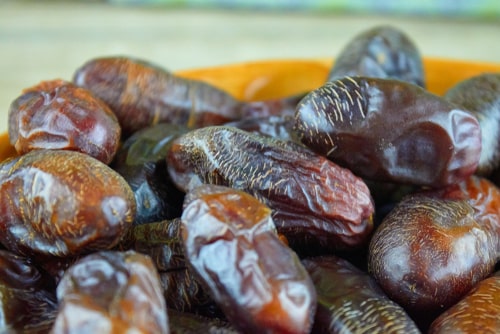
1. Algeria is commonly called the country of cherries and dates. This refers to the various types of weather found here; a mild climate in the north and a dry, hot one in the Saharan south. Algerian dates are known to be some of the best on earth. Visitors are traditionally greeted by being offered dates and milk.
2. The official name of Algeria is the People’s Democratic Republic of Algeria and its National Holiday is also known as Revolution Day, honoring the day the final bid for independence began on the first of November decades ago.
3. Algeria’s official language is Arabic. The people speak Arabic, Berber (called Tamazight and Amazigh) or French. Algerian Arabic (called darja) is spoken by well over half the population as well. Although English is not commonly spoken, it is taught in Algerian schools.
Algeria and other African countries on the map.
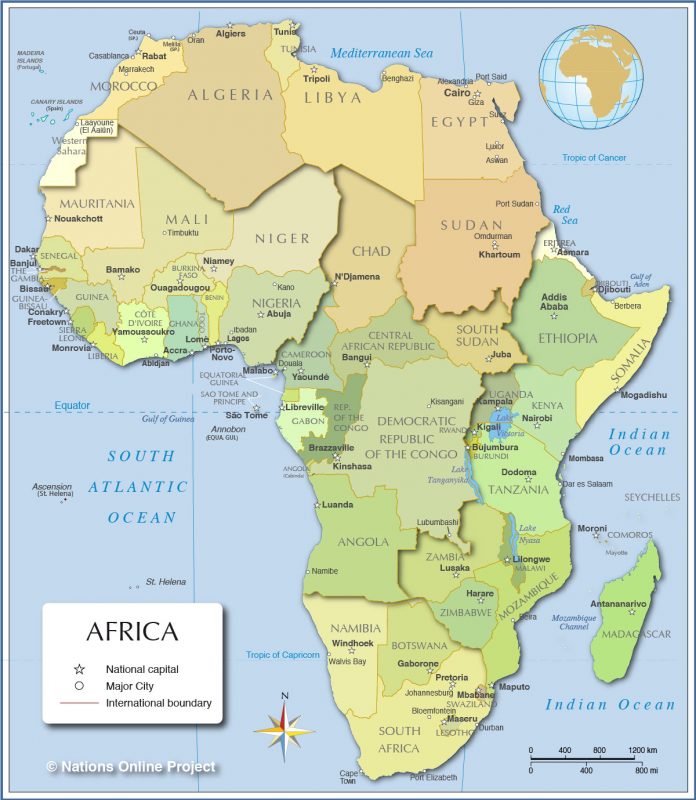
4. Algeria’s official religion is Islam and it is illegal to proselytize (advocate or promote) to the people about any other religion. The legal system is based on the French court system and Sharia law.
5. Even though Western clothing is common, mostly in urban areas, traditional Muslim clothing is also common. In areas under Islamic Salvation Front (FIS) control, people wear some form of traditional garb, particularly the women. It is considered proper to be dressed conservatively in public and modest clothing is worn by all Algerians. The militant Islamists demand that women be veiled and they are more than willing to enforce their orders.
6. The national animal of Algeria is the Fennec Fox (is the smallest of all the world’s foxes) and their national football team (soccer) is named after the animal: “Les Fennecs”. Football (soccer) is Algeria’s national sport. The fennec is a small desert fox with disproportionately large ears.

7. Hospitality is important among the Algerian people. It is a blend of Arabic customs with French Gallic traditions. Everyone is cordial to strangers and friends alike. In a small gathering, it is polite to greet each person individually, beginning with the elders. Handshakes are common but using your fingers to point at objects or people is considered rude. Never use the left hand separately: when handing someone something, do it with the right hand or both hands.
8. In this male dominant society, sex roles are clearly defined. (Nevertheless, some women do fill important positions in public and private professions.) Fathers handle family finances while mothers take care of the children and the home. Men often meet at coffeehouses to play games like chess, checkers, and dominoes. The women tend to socialize in each others’ homes.
9. Close friends and relatives visit each other frequently and don’t have to have an invitation or let each other know first. Others are expected to make advance plans. When visiting someone socially, it is customary to bring the host a small gift.
10. Speech in conversations that is too direct and frank is considered impolite. Key attributes of the Algerian national character are courtesy and formality.
About economy and people of Algeria
11. All but two percent of Algeria’s exports are fossil fuels. Petroleum and natural gas make up 98 percent of the country’s exports. The country’s crude oil reserves are the 16th largest in the world with 12,200 million barrels of oil reserves (at the start of 2017). Algeria is also Africa’s largest oat market.
12. Algeria owes no money to other countries; it has no external debt. Unfortunately, one in every four of its citizens lives on less than a dollar a day. Many Algerians are poor. The national currency is the Algerian Dinar.
13. Only about three and a half percent of the country’s land is cultivated, far too little for feeding their population self-sufficiently. As a result, malnutrition is one of the nation’s principal health problems. Five percent of Algeria’s population is undernourished, according to the World Bank.
14. Free national health care was introduced by the government in 1974 and helps pay for those who are sick and injured. Nearly all of the people living in urban areas and 80 percent of the population in rural areas have access to adequate sanitation.
15. Algeria’s literacy rate is 80 percent; more men can read than women. Women have traditionally been discouraged from attending school to stay home with their mothers. French is the instructional language at school. English is taught as well.
16. Only 12 percent of Algeria’s land area is inhabited. The northern coastal area is home to 90 percent of the population while the remaining nomadic or partly nomadic population lives in oases in the Sahara desert. Twenty-nine percent of Algerians are under 15 years old.
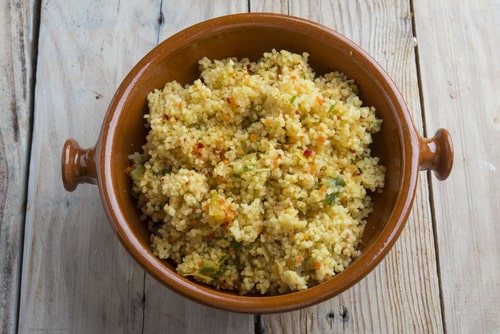
17. People gather for helping in the harvest and then feasting in a celebration known as “La Touiza”. Huge amounts of the national dish of couscous are served after the hard work of harvest.
18. Algerian born Nobel Prize winners are Albert Camus and Claude Cohen-Tannoudj (Physics, 1997). Camus (Literature, 1957) was the goal keeper for the football (soccer) team while at the University of Algiers. His family was French and lived in Algeria during the colonial years.
19. Algeria has competed at every summer Olympics since 1964, winning five gold medals and 17 medals overall. They won two silver medals in the 2016 games in Brazil.
20. Women in Algeria, unlike those in other Islamic nations, make up 60 percent of the student population. They also have considerable prominence in society as 70 percent of Algeria’s lawyers and 60 percent of its judges are women. Algerian women make a larger contribution to household income than their male counterparts.
About geography, climate, and tourism
21. The largest country by area in all of Africa is Algeria. It is the tenth-largest in the world.
22. Only 12 percent of its land is inhabited. Over 90 percent of the country is covered by the Sahara desert.
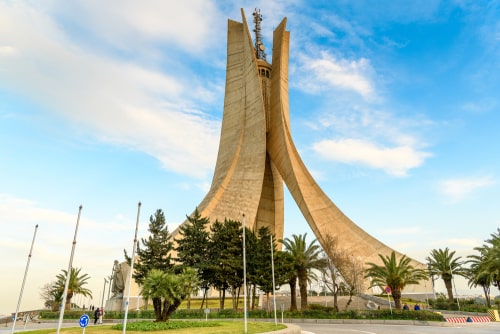
23. The capital city of Algeria is Algiers, which is also the country’s largest city.
24. Algeria is in North Africa and is located on the Mediterranean Ocean with Morocco to the west and Tunisia to the east.
25. Algeria recorded its record high temperature in August of 2011. The thermometer topped off at 123.8°F (51°C). Its coastal region, though, has a typical Mediterranean climate that is pleasant all year round. Rainfall is abundant along the coast and scarce in the desert. The mountains receive a lot of frost and some snow.
Map of Algeria
26. Mount Tahat is Algeria’s highest mountain and is 3,003 meters (1.9 miles) high. Its longest river is the Chelif. It flows from near the city of Aflou through the Tell Atlas to empty into the Mediterranean and is 700 kilometers (435 miles) long.
27. Algeria’s Tassili National Park is also called “Plateau of the Rivers”. It is a large open sky museum where there are many prehistoric rock art drawings and other archaeological sites from the Neolithic era. Some drawings are called the ‘Aliens on the rocks’.
28. Algeria’s mountainous and fertile northern regions have cork and olive trees. There are also evergreen forests that are home to wild boars and jackals. Various palm, agave and fig trees also grow in the warmer climates. Grapes are native to the coastal plain.
29. Central Algeria has the region of High Plateaus with shallow or dry lakes and salt marshes. The further south you travel, the more arid the land and climate becomes. The vegetation here is sparse. Rabbits, snakes, scorpions, and camels live in the desert climate.
30. There are seven UNESCO World Heritage Sites in Algeria. Some are ruins of cities built by the indigenous people and some are Roman ruins. Cultural: 1. Al Qal’a of Beni Hammad (1980), 2. Djémila (1982), 3. Kasbah of Algiers (1992), 4. M’Zab Valley (1982), 5. Timgad (1982), 6. Tipasa (1982); Mixed: 1. Tassili n’Ajjer (1982).
31. Al Qal’a of Beni Hammad is ruins of an ancient fortified Muslim city that give us an authentic picture of the style of life there. The Kasbah of Algiers (also spelled Casbah) is a historic citadel Napoleon III visited in 1860.
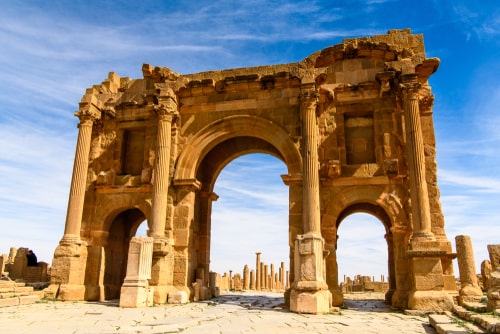
32. Timgad is a Roman-Berber ruin in the Aurés Mountains. Djémála features some of the best preserved Berbero-Roman ruins in North Africa. They demonstrate a unique adaptation of Roman architecture to a mountainous environment.

33. The M’Zab Valley contains five “walled villages” or ksours (qsurs) known as the Pentapolis. Tipasa is a ruined city on the central coast of the Mediterranean that emperor Claudius turned into a military colony.
Facts about history of Algeria
34. During Algeria’s history, the country has been ruled by Romans, Germanic tribes, Byzantines, the Spanish, Turks and the French. In its earliest time, the country was known as Numidia.
35. There are many interesting architectural sites of significant historical interest in Algeria and seven of them have been designated UNESCO World Heritage Sites.
. . . continue reading on the next page.
